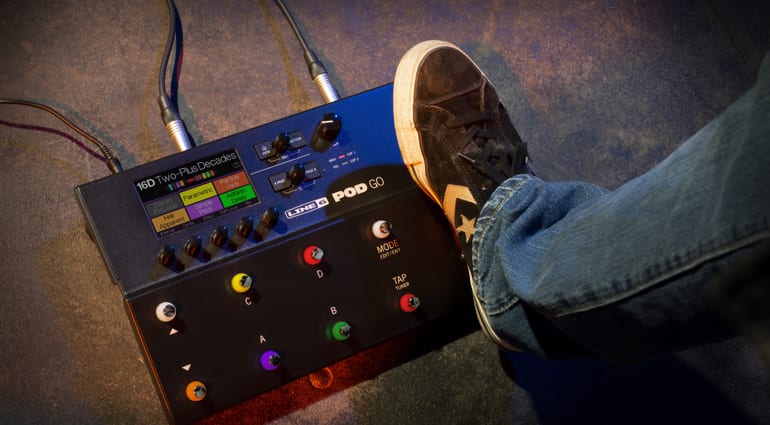Line 6’s Take on the Battering Ram For bassists seeking aggressive tones that balance control with chaos, the Wounded Paw Battering Ram has carved a niche as a uniquely flexible drive/fuzz hybrid. With its parallel routing of overdrive and fuzz circuits, and the ability to dial in everything from subtle breakup to unhinged fuzz madness, it became a cult favorite among experimental and heavy-music bass players alike. In the HX Stomp/Helix world, Line 6 brings their take on this Canadian beast with the Clawthorn Drive—a highly tweakable distortion block designed to capture that same dual-engine mayhem. But does it hold up in tone, flexibility, and real-world use? The Battering Ram Legacy and Line 6’s Interpretation The Wounded Paw Battering Ram (especially in its later versions like the V2.6 and Q2) is known for offering two distinct but blendable voices: a tight, controlled overdrive and a wooly, sometimes chaotic fuzz, each with its own set of controls. Add to that optional octave fuzz and a four-band EQ in some models, and you get a serious tone-shaping machine. Line 6’s Clawthorn Drive mirrors this structure well in the Helix ecosystem. It provides individual gain, tone, and level controls for both Overdrive and Fuzz sections, plus a Low Boost switch and a Fuzz Octave toggle to kick the fuzz into nastier territory. Here’s a breakdown of the block’s parameters: This layout makes it easy to dial in anything from subtle warmth and growl to buzzy, synth-like textures or a thick wall of filth—and do it all in parallel. How It Sounds: Dual Engine, Dual Personality The real strength of Clawthorn Drive is in its blendability. The overdrive section can provide just a touch of breakup or be pushed into a more aggressive growl, perfect for rock, punk, or adding definition to sludgy riffs. The tone control lets you shape the character from dark and rounded to bright and biting. The fuzz side is where things get interesting. With the Fuzz Oct engaged, it leans into synth territory—great for drone, doom, or modern experimental tones. Without it, the fuzz is thick and chewy, but with surprising articulation when dialed in carefully. The Fuzz Gain and Tone knobs offer a wide spectrum, from velcro-rip textures to smoother, more musical fuzz. Engaging both sections together—especially with the Low Boost on—yields massive, layered tones. The overdrive can add punch and clarity, while the fuzz delivers girth and grit. This is particularly effective for bassists who want to retain note definition in the low end while still sounding enormous in a band mix. Tweaker’s Paradise, Performer’s Tool Thanks to the Helix architecture, Clawthorn Drive isn’t just a flexible tone machine—it’s a programmable one. You can: For bassists who frequently shift between styles—say, post-rock cleans, doom metal fuzz, and alt-rock drive—all in one set, Clawthorn provides enough range to replace multiple pedals. Final Verdict: Should Bass Players Use It? The Clawthorn Drive is one of the more underappreciated gems in the Helix lineup, particularly for bass. It doesn’t chase the modern, polished aggression of a Darkglass-style drive—instead, it offers unusual texture, tonal variety, and chaos control, making it ideal for: It might not be the right fit for players seeking surgical, mix-ready distortion straight out of the box—but for those who want to sculpt their sound, Clawthorn is a powerful, flexible option. Whether you use it subtly to thicken your tone or go full noise-wall, Clawthorn Drive delivers. For HX users looking to move beyond the usual suspects, this is absolutely worth a deep dive.

